Cylinder boring – everyone who has an ATV knows what this term means, but did you ever wonder exactly what happens to your cylinder between the time you drop it off and the time you pick it up? What I am going to show in this article are the steps and procedures for doing this critical job correctly.
Cylinder boring – everyone who has an ATV knows what this term means, but did you ever wonder exactly what happens to your cylinder between the time you drop it off and the time you pick it up? What I am going to show in this article are the steps and procedures for doing this critical job correctly.
Here we are all set up to run some cylinders through the first step in boring a cylinder. After the upper and lower gasket surfaces are cleaned we are ready to go.
You are seeing correctly, the cylinder is mounted upside down. This assures that the new bore is square with the cylinder base.
The cutting tip spins in the holder and automatically feeds itself down into the bore cutting a perfectly round hole parallel to the cylinder base. The bore is taken to within two thousandths or so of the finished bore size using this machine. Most shops will be happy to show you their boring equipment if they have it. If all they show you is a hone, take your cylinder elsewhere. Removing large amounts of material with a hone can get the bore out of square – not cool.
On two-stroke cylinders, it is necessary to chamfer the port edges. Rounding of the sharp edge prevents premature wear on the piston and ring assembly. Using a rotary burr to make the initial chamfer, and finishing it out with a sandroll, is a good way to get the proper angle and finish.
The top of the exhaust port shows a properly chamfered port. It doesn’t take a lot of material removal, just enough to break the sharp edge. I prefer to do my chamfer work before I finish hone the cylinder.
Honing Tools
What you see in this photo are cylinder hones. Most of you have seen the “spring loaded paddle hones,” these are much different. These hones adjust by a screw that allows the operator to add tension as needed. Unlike a spring-loaded hone, they will only cut a round circle if used properly. The cylinder’s final finish and size are attained using these pieces of equipment.
The fine stones that are doing the finish work will also imbed their abrasive into the cast iron walls of the cylinder. After picking up your cylinder from getting a fresh bore job, always wash your cylinder in hot soapy water. Washing in a solvent tank won’t get the abrasives out! Dawn dishwashing liquid works great for the final cleaning of a freshly bored and honed cylinder. After you clean and rinse the cylinder, dry it quickly and then get a clean white paper towel with oil on it and use it to lubricate the bore. If the towel comes out of the cylinder, when you’re done lubricating it, with any traces of black or gray then the cylinder needs to be cleaned yet again. When properly cleaned the white paper towel with the oil on it will look the same color on removal as it did when you put it into the bore.
After you clean and rinse the cylinder, dry it quickly and then get a clean white paper towel with oil on it and use it to lubricate the bore. If the towel comes out of the cylinder, when you’re done lubricating it, with any traces of black or gray then the cylinder needs to be cleaned yet again. When properly cleaned the white paper towel with the oil on it will look the same color on removal as it did when you put it into the bore.
You are now ready to install your new piston into the cylinder and get back to riding!
Thanks for taking the time to read this article. Maybe next time we can modify a 2-stroke cylinder head.
Rick
Editor’s Note: Rick Ritter is an expert engine builder and offers a variety of services and performance parts. Visit Rick’s web site at rittercycle.com
First posted at ATV Connection on 1 January 2006
Check out our video about Cylinder Boring
Tags: Articles, Cylinder Boring, F
by Tom Lutzenberger
Aeronautical piston engine image by Andrew Breeden from Fotolia.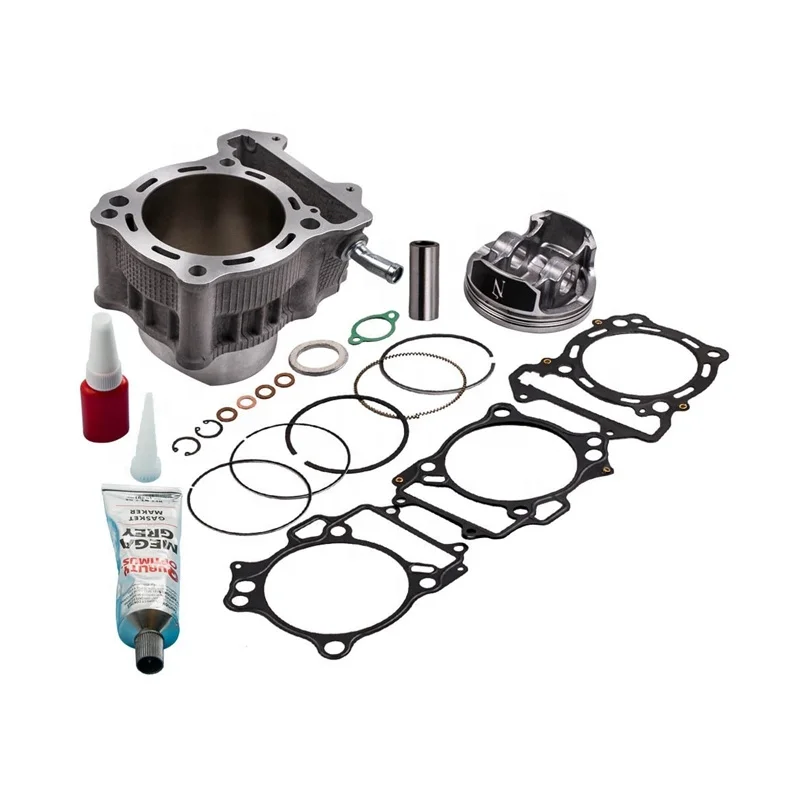 com
com
As engines get used, over time their cylinders become worn out. This wear and tear results from the ongoing friction stresses created from the piston, the piston rings and the combustion of the engine. During a major rebuild, boring out and honing the engine cylinders provides new life to the engine parts and reduces combustion problems from deposits.
Dismantle the cylinder and remove it from the engine. Use a socket wrench and sockets and various crescent wrenches as needed to release the engine cylinder case. Remove any remaining engine parts from the cylinder so that it is completely bare. Wash it down in a large wash tub with kerosene or a similar solvent to remove engine dirt and residue. Let the cylinder part air-dry.
Position the cylinder part in a holder so that it remains locked still when working on it with a boring cutter tool. Position the cylinder so that it is facing upside down and straight upwards. Position the boring cutter so that it is parallel with the cylinder. Allow the boring cutter tool to lower into the cylinder and perform the boring work, producing a round hole in the cylinder material. Finish the cylinder ports with a hand-held rotary or grinding tool by chamfering the intake and exit port edges inside the cylinder (only applies to two-stroke cylinders). Use a rotary burr for the initial chamfer work and a sandroll bit for the final grind.
Allow the boring cutter tool to lower into the cylinder and perform the boring work, producing a round hole in the cylinder material. Finish the cylinder ports with a hand-held rotary or grinding tool by chamfering the intake and exit port edges inside the cylinder (only applies to two-stroke cylinders). Use a rotary burr for the initial chamfer work and a sandroll bit for the final grind.
Attach the proper-size honing tool for your cylinder to a power drill or similar tool that will allow the honing tool to rotate at high speeds. Use a screwdriver to adjust the tension on the honing tool so that it properly fits the cylinder when inserted. Apply engine oil to the honing tool end so that it is fully covered with oil.
Insert the tool into the cylinder and turn it on to maximum speed, holding it firmly. Move the honing tool in and out of the cylinder quickly so that it doesn't grind one spot too long. Do not pull it all the way out or you will damage the cylinder edge. Pull the tool out and check the work. Reinsert the tool and spin it the opposite direction. Pull the tool out again and ensure that the inside of the finished cylinder displays a cross-hatch pattern.
Pull the tool out and check the work. Reinsert the tool and spin it the opposite direction. Pull the tool out again and ensure that the inside of the finished cylinder displays a cross-hatch pattern.
Take the grinded cylinder and wash it completely with hot water and soap. Rinse it one final time and then dry it immediately. Do not let it air-dry or you will get flash rust.
Apply engine oil to a paper towel and wipe it on the inside of the cylinder. Pull the paper out and look for gray or black stains. Keep lubricating with more paper towels and oil until the paper towel no longer stains.
References
Tips
 This prevents being hurt by any stray metal bits that come flying out of the cylinder.
This prevents being hurt by any stray metal bits that come flying out of the cylinder. Things You'll Need
Warnings
Writer Bio
Since 2009 Tom Lutzenberger has written for various websites, covering topics ranging from finance to automotive history. Lutzenberger works in public finance and policy and consults on a variety of analytical services.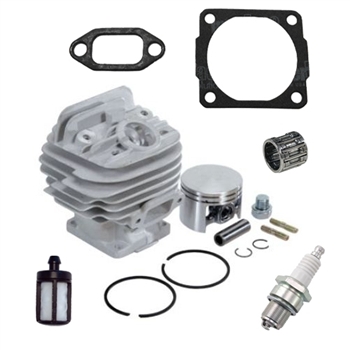 His education includes a Bachelor of Arts in English and political science from Saint Mary's College and a Master of Business Administration in finance and marketing from California State University, Sacramento.
His education includes a Bachelor of Arts in English and political science from Saint Mary's College and a Master of Business Administration in finance and marketing from California State University, Sacramento.
Many people today want to learn how to bore a cylinder (cylinder block) at home. Thousands of views of video reviews are clear evidence of this. But, unfortunately, this is the destiny of only those craftsmen who are able not only to do something, but to do well. We do not see the expediency of carrying out this operation in your garage for those motorists who consider self-repair to be only one of the few hobbies. On the contrary, if you can easily cope with the repair of many engine components, then boring the cylinder block will be too tough for you.
Video instructions, as a rule, clearly show this event, but the viewer misses the most important thing - the specifics of the event.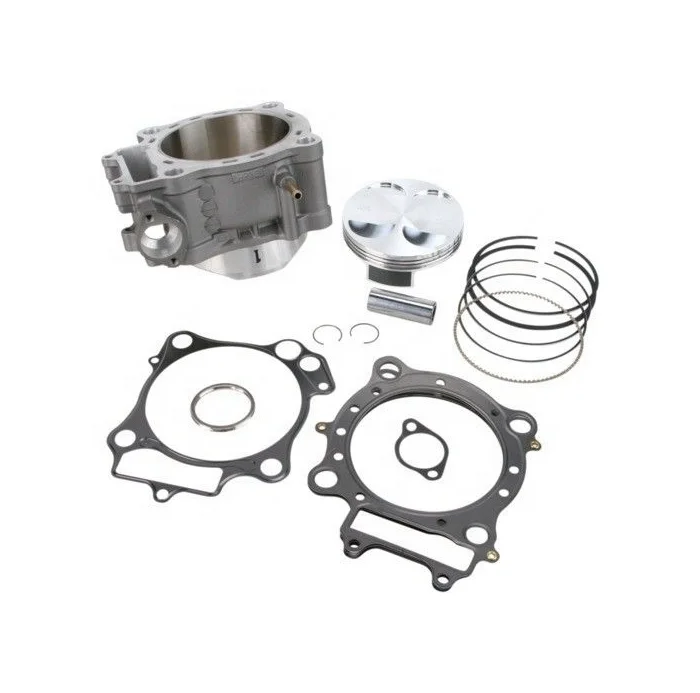 It seems to him that everything is simple and easy, and he can do it, but we must not forget that the pro block is boring in the video.
It seems to him that everything is simple and easy, and he can do it, but we must not forget that the pro block is boring in the video.
Most of all, cylinder block boring is of interest to car owners who are concerned about compression. Watching a large number of videos for many becomes a revelation. They understand that it will be extremely difficult to deal with this matter correctly at home.
As you know, with insufficient compression of the cylinders, the internal combustion engine cannot produce the required power, and the dynamics of the car decreases. Boring helps to significantly increase power by increasing the compression area on the cylinders.
Despite the fact that many experts recommend that the operation be carried out in a car service, there are more and more people who want to master the nuances of the operation. And it's not limited to video views. In search of useful information, an interested car enthusiast spams forums and sites, trying to find easy-to-understand instructions, but in most cases in vain.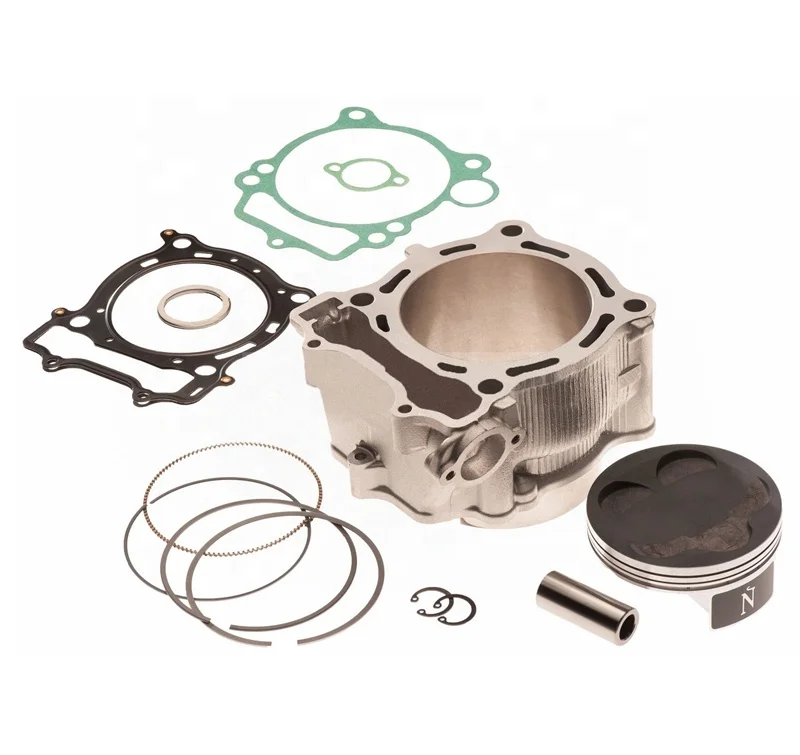
So, closer to the topic. It is possible to bore a cylinder block at home without special equipment by several folk methods. They will require not only time, which goes without saying, but also patience.
On the other hand, most experts agree that you still need to use the machine. The boring machine will allow you to fit the cylinder perfectly accurately, although much will depend on the skills of the person. But in comparison with the manual boring method, the proportion of marriage is minimized.
Although the method is "old-fashioned", it also cannot do without a tool. A good electric drill, set at low speeds, is suitable here. A worn piston is also required, having a gap in the sleeve (side). And you will also need a cylinder pin, as well as a skin with a different number of abrasive.
The piston in this case plays the role of the most significant element. It is the working body on which the sandpaper is fixed.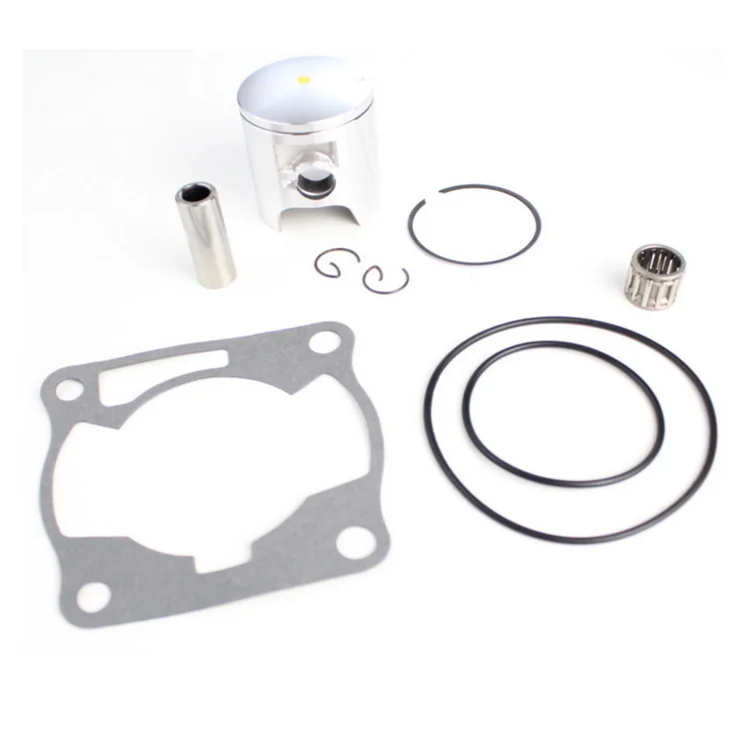 It is better to select an old and exhausted piston, since after boring it will already be unusable.
It is better to select an old and exhausted piston, since after boring it will already be unusable.
In the process of such boring, it is necessary to ensure that the skin does not come out of the piston. At first, a large skin is applied, then a smaller one.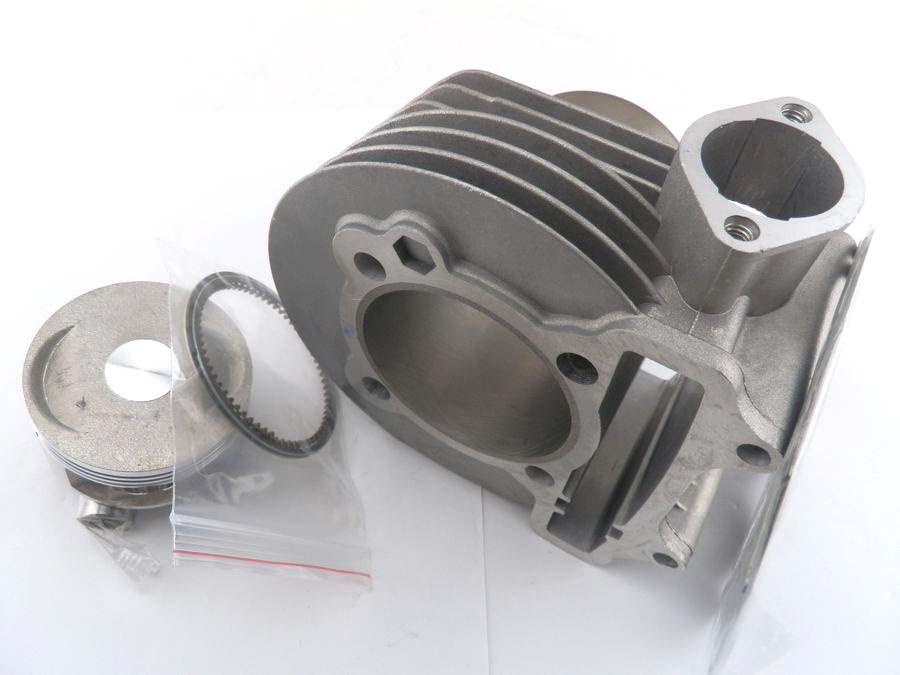 At the final stage, grinding should be carried out by zeroing.
At the final stage, grinding should be carried out by zeroing.
Some experts also advise to bore the cylinder block while using oil. Others do not agree with this opinion, as they believe that it is well bored even when dry. The latter option appeals to us more, especially since uniformity and smoothness can be felt with your hands, if you have a certain skill.
A useful recommendation is: in order not to beat off your hands during grinding with an electric drill, it is recommended to fix the cylinder well, but try not to damage it.
In this case, a wooden mandrel will be used as the main tool. But you will have to turn to a milling machine operator who will grind this very mandrel. Mandrel manufacturing technology is based on the following formula: if the cylinder being bored is 76, the bar mandrel should be 74 mm in diameter.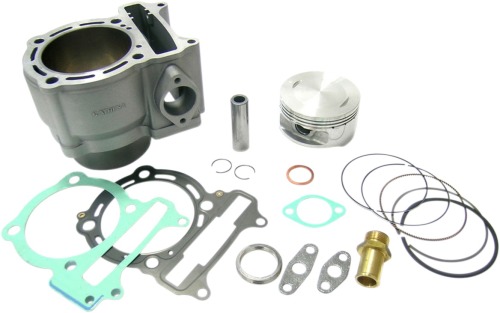 As for the length, it should be 200 mm larger than the cylinder size.
As for the length, it should be 200 mm larger than the cylinder size.
The approximate depth of the groove should be 10 mm. The skin, as in the first case, should be both large and small.
The best grinders in the world are the Japanese. Their secret is in their great patience. The same is true here. You have to be patient, otherwise nothing really will come of it. It is not worth rushing in the process of boring cylinders.

The ideal cylinder bore that contains the car engine block:
The ideal bore for the cylinders that the motorcycle engine block contains:
Once you learn how to do your own boring work properly, you will no longer be bothered by the problem most used car owners have. It is hardly possible to avoid low compression of internal combustion engines on used cars, but theoretically everyone can bore and increase compression.
Novice craftsmen who try to do everything with their own hands ask this question, is it possible to grind an engine block in garage conditions and how to do it.
You can bore the engine block yourself without a machine, but it takes a lot of time and patience, but now I still bore the engine block in a specialized workshop, less hassle. But before, he often bored motorcycle cylinders himself, without a machine, with a manual mandrel.
This cylinder boring method can be used for both engine block boring and motorcycle cylinder boring.
The only thing you will have to do is to turn to the turner to turn the mandrel, for boring the cylinder it is shown in the figure.
A mandrel for boring a cylinder can be machined from wood, the principle of turning is as follows, if you are going to bore a cylinder that has a diameter of 76mm, then the mandrel must be machined with a diameter of 74mm, and longer than the cylinder, 150 millimeters can be more.
After the turner has turned the mandrel, it is necessary to drill a hole for the wrench in it, and cut a groove along the mandrel with a depth of 10 millimeters with a hacksaw, as shown in the figure.
The process of boring itself is simple, but long and tedious, but if there is a desire and desire, then everything will work out.
The mandrel is done, the only thing left is to purchase sandpaper, it is advisable to buy sandpaper with coarse grain and moisture resistance, and one or two sheets of fine sandpaper for stuffing the mirror. All purchased, proceed to the very boring of the cylinder, insert the sandpaper into the groove and wrap the mandrel with it, generously lubricate the sandpaper with oil, insert it into the cylinder, and start rotating the mandrel with the sandpaper in the cylinder.
Fig. Block boring mandrel
And now the most important thing is how to properly bore the cylinder to the repair size, wrap the mandrel with sandpaper, try to insert it into the cylinder, if the mandrel with sandpaper easily enters the cylinder, then put paper under the sandpaper, make sure that the mandrel with sandpaper entered the cylinder tightly by rotation.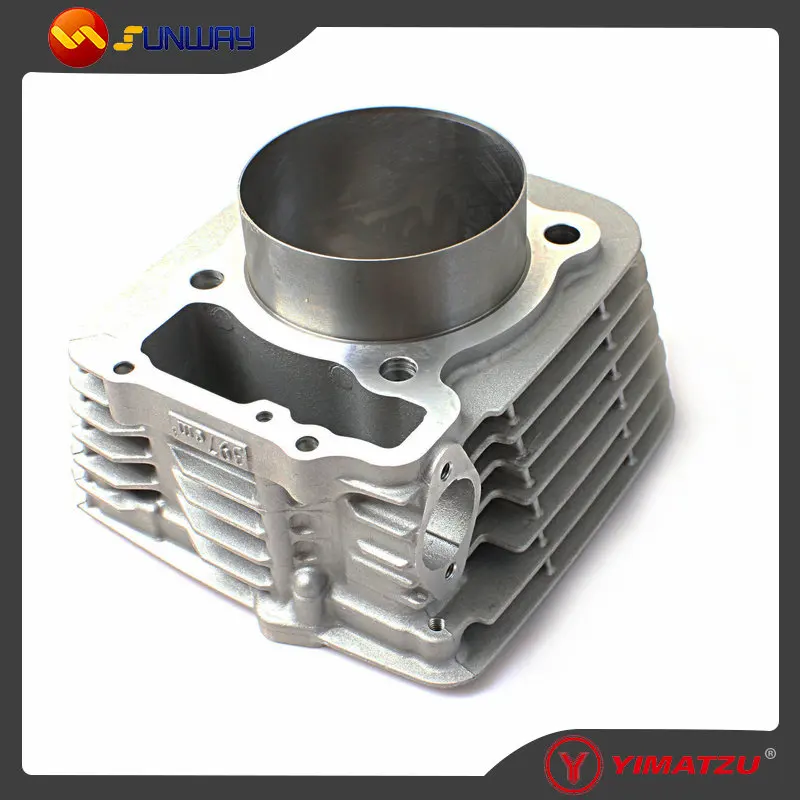 But do not forget to generously lubricate the sandpaper with oil, with oil the cylinder is well bored and the sandpaper does not clog. As the mandrel with sandpaper begins to rotate easily, place more paper under the sandpaper. As you bore the cylinder, try to insert the repair piston, and as soon as the piston starts to fit tightly into the cylinder, take fine-grained sandpaper and fill the mirror.
But do not forget to generously lubricate the sandpaper with oil, with oil the cylinder is well bored and the sandpaper does not clog. As the mandrel with sandpaper begins to rotate easily, place more paper under the sandpaper. As you bore the cylinder, try to insert the repair piston, and as soon as the piston starts to fit tightly into the cylinder, take fine-grained sandpaper and fill the mirror.
If you are boring a cylinder for a machine, then it is desirable that the piston in the cylinder does not move very tightly, but stands in the cylinder and does not move under its own weight.
When boring the cylinder of a motorcycle, bore the cylinder so that the piston in the cylinder does not hang out, but also moves easily, since in the motorcycle the air cooling and the cylinder heats up much more and if the cylinder is bored tightly, the piston will wedge when heated, running the motorcycle will turn into torment.
I hope my experience with cylinder boring will help you to bore the cylinder yourself.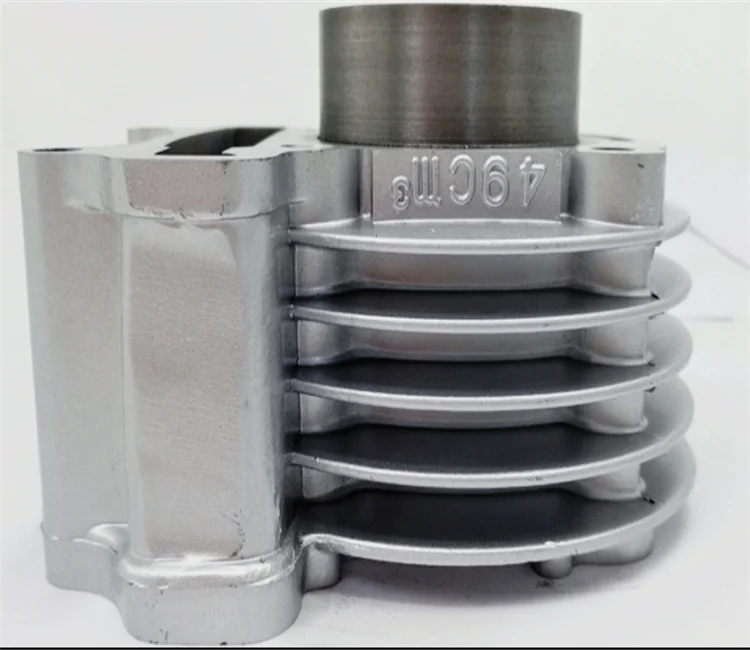
In this operation we will need: birch log, caliper, marker, chisel, saw, cylinder (the one we are going to sharpen), piston (new and old), rasp (you can file), drill, long a bolt with a nut or a stud with two nuts, sandpaper sheets "10", "6", "5" and "0" (on a woven basis - they will not work on paper). A few caveats at once - the stud or bolt must be at least 8mm in diameter. The best solution would be 12mm. Sandpaper is selected independently, on the type of boring. it is desirable to go through the "rough" and bring "to clean water", and not to drive the draft until you turn blue. Then fix the final one, and buy-select a new piston.
Let's start - measure the sleeve with a caliper:
Let's take an allowance of 10mm, and measure it on an already trimmed log:
Immediately we take a chisel that is larger - and chop off the excess "meat". We give the shape of a cylinder.
But the shape of the cylinder will not work, it will turn out to be something like an oval:
The next step will be to tighten the resulting cylinder on a stud / bolt. Tighten to a creak in the teeth. When inserted into a drill - tighten to a creak in your teeth - it will unwind with a bang. You tighten it harder - it won't run away. Now fix the drill, make an emphasis on the chisel, and spin the cylinder by pressing the "gas" at the drill. Take frequent technology breaks. During breaks, tighten all nuts. If unscrewed - the results can be disastrous.
Substituting the chisel (smoothly substituting the chisel!) we achieve that we first get an oval:
Then the shape will remind us of a cylindrical object:
Later we get a natural, perfect cylinder. I think there is no need to explain that finishing was no longer carried out with a chisel, but with a rasp, and later with a file.
The best cylinder boring is done on a special boring machine, the cylinder will be perfectly bored, although this also depends on the skill of the borer.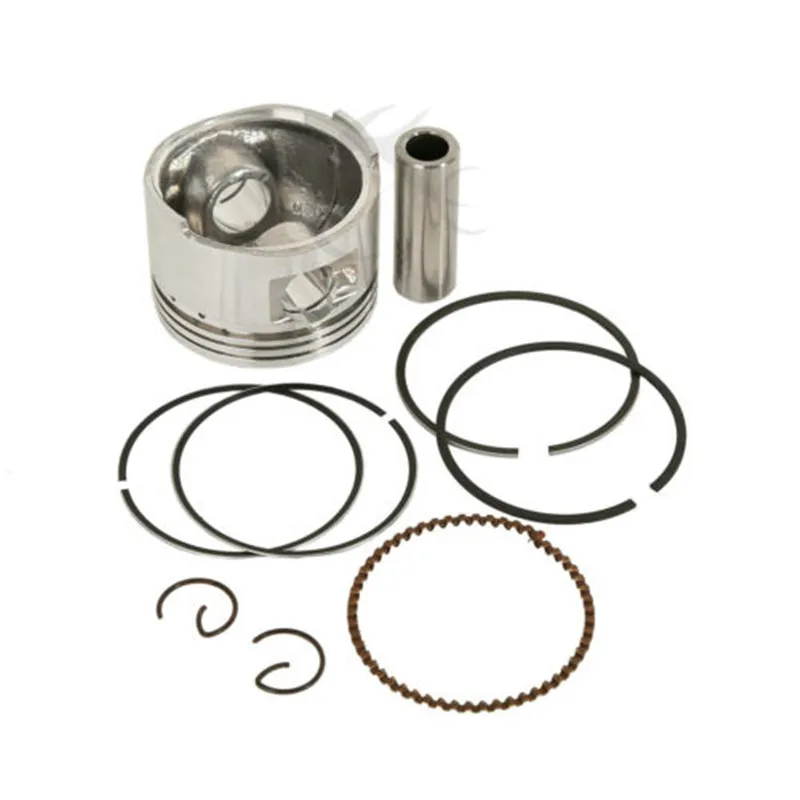 Boring by hand may not produce a perfect cylinder, which is a waste of time. Therefore, it is better not to suffer, boring the cylinder with your hands, but to find out where there is a cylinder boring workshop nearby.
Boring by hand may not produce a perfect cylinder, which is a waste of time. Therefore, it is better not to suffer, boring the cylinder with your hands, but to find out where there is a cylinder boring workshop nearby.
How to bore a cylinder at home. Video.
Often, drivers are faced with the question of how to bore a cylinder block at home? Does such a procedure make sense? This is because block grinding is a rather complicated process, and it is not always possible to do it yourself. Probably time and effort will be wasted. First of all, the quality of the work carried out will raise doubts.
How to bore a cylinder block at home? It must be said right away that there is a real chance to do without a machine, but to use the so-called generally accepted methods. Experienced turners are advised to use specialized equipment. With it, it is possible to fit the cylinder perfectly, provided that a professional works. Boring the block with your hands, you do not always get the desired result.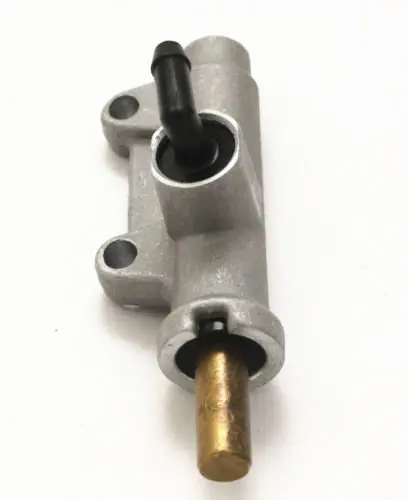 Of course, in the absence of a machine, there is no other way out. This option is considered optimal for power units installed on motorcycles and mopeds.
Of course, in the absence of a machine, there is no other way out. This option is considered optimal for power units installed on motorcycles and mopeds.
So, closer to the topic. It is possible to bore a cylinder block at home without special equipment by several folk methods. They will require not only time, which goes without saying, but also patience.
On the other hand, most experts agree that it is still necessary to use the machine. The boring machine will allow you to fit the cylinder perfectly accurately, although much will depend on the skills of the person. But in comparison with the manual boring method, the proportion of marriage is minimized.
Although the method is "old-fashioned", it also cannot do without a tool. A good electric drill, set at low speeds, is suitable here. A worn piston is also required, having a gap in the sleeve (side). And you will also need a cylinder pin, as well as a skin with a different number of abrasive.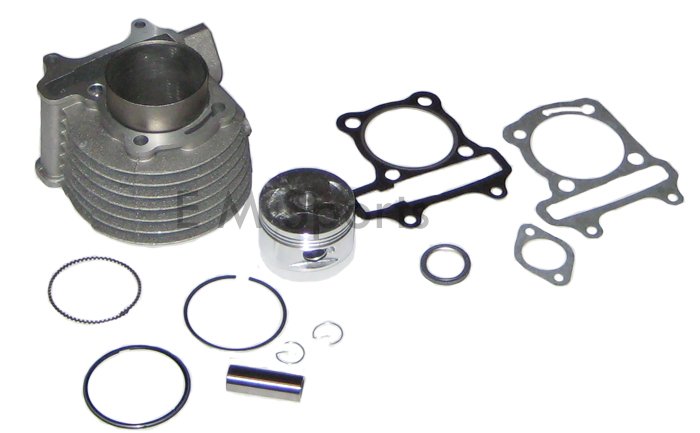
The piston in this case plays the role of the most significant element. It is the working body on which the sandpaper is fixed. It is better to select an old and exhausted piston, since after boring it will already be unusable.
Car service does not use paper, but abrasive chips. Instead of a drill, as mentioned above, a special machine with a crank having the required diameter is used.
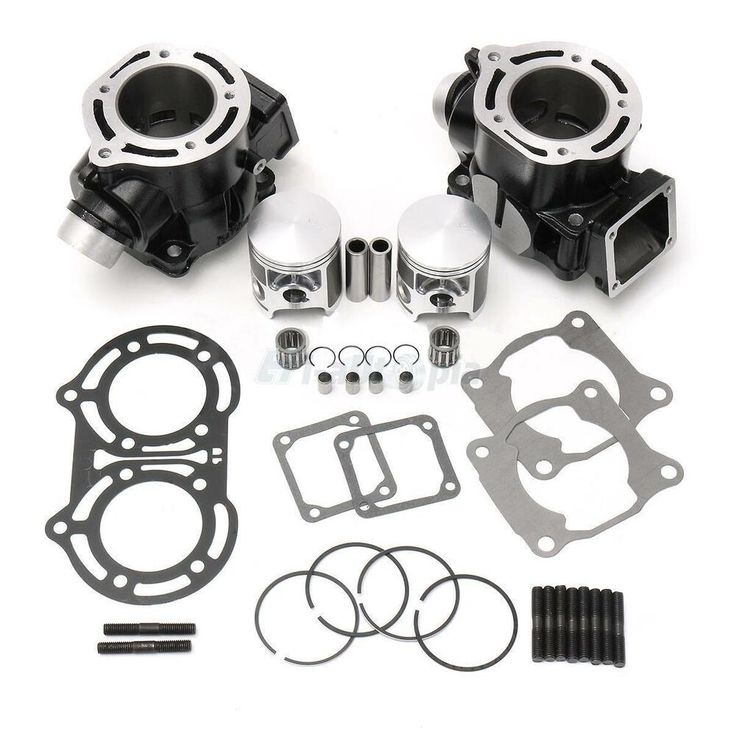
In the process of such boring, it is necessary to ensure that the skin does not come out of the piston. At first, a large skin is applied, then a smaller one. At the final stage, grinding should be carried out by zeroing.
Some experts also advise to bore the cylinder block while using oil. Others do not agree with this opinion, as they believe that it is well bored even when dry. The latter option appeals to us more, especially since uniformity and smoothness can be felt with your hands, if you have a certain skill.
A useful recommendation is: in order not to beat off your hands during grinding with an electric drill, it is recommended to fix the cylinder well, but try not to damage it in the process.
You will also find the honing video helpful.
A wooden mandrel will be used as the main tool in this case. But you will have to turn to a milling machine operator who will grind this very mandrel. Mandrel manufacturing technology is based on the following formula: if the cylinder being bored is 76, the bar mandrel should be 74 mm in diameter. As for the length, it should be 200 mm larger than the cylinder size.
As for the length, it should be 200 mm larger than the cylinder size.
The approximate depth of the groove should be 10 mm. The skin, as in the first case, should be both large and small.
The pistons, moving down and up inside the cylinder, are in constant friction with the cylinder walls, thereby leading to its wear. It is worth noting that the motorcycle cylinder can wear out quite unevenly, and therefore, the cylinder is deformed, losing its original shape. Unfortunately, with the naked eye, this defect becomes noticeable far from immediately. However, the fact that the shape of the cylinder has changed can be found out with the help of special measuring tools.
It should be remembered that the piston moves inside the cylinder along the correct trajectory only theoretically, in practice it happens a little differently. The angle of deviation from the trajectory affects the wear rate of parts. Thus, the larger the angle, the faster the motorcycle cylinders wear out.
The angle of deviation from the trajectory affects the wear rate of parts. Thus, the larger the angle, the faster the motorcycle cylinders wear out.
The movement of pistons in cylinders along an incorrect trajectory is due to several factors, one of which is the nature of the design (lack of axis or perpendicularity of the position of the parts that are mated).
In addition, very large dimensional tolerances also contribute to the rapid wear of pistons and cylinders, due to which the piston moves not only parallel to the cylinder axis, but also with a certain deviation from the horizontal.
It is also worth considering the temperature regime at which all this happens, as well as the products of production. All this has a devastating effect on the cylinder walls and piston surface. Thus, as a result, we can have not a round cylinder, but an elliptical one.
We buy a new piston, a repair size higher (usually 1 unit) and see how and where it fits in (if it doesn’t fit, then
is still ahead).
We shove in different directions in order to understand where and what gets in the way. If the cylinder worked in risky modes, then it has a huge output. Mine ran too early, a little lean, which gave quite a lot of revs.
The cylinder mirror is excellent, but here is the output:
What you see on the cylinder liner is dirt. That is, the lubricant, once the former. After removing it, for some reason I preserved it. I don't know why.
Having measured the piston (if it goes inside me, but it wedges right in the middle), I realized that it needs quite a bit to sharpen. If the piston does not climb at all, then yes, we look at how much to grind. Usually in such situations, they sharpen 0.1-0.15 mm. I sharpened 0.01-0.07. It is advisable to pick up such a piston in the store so that it barely enters. Then it will be better to bore in that you can pick up the piston even more and bore it again. In the pictures, just a worked out cylinder, which seems to have served its resource in this repair.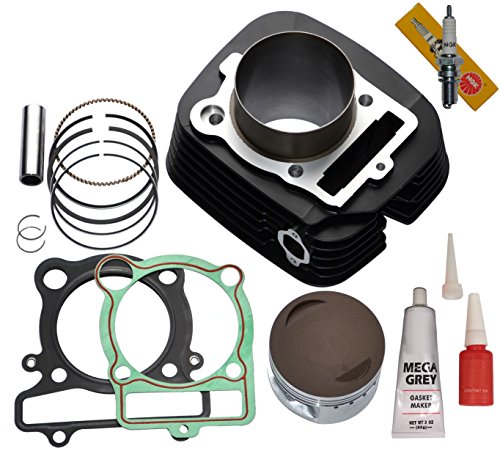
If this situation occurs, replacing the piston alone does not solve the problem. It needs to be solved comprehensively, i.e. piston replacement plus cylinder bore of a motorcycle.
i.e. Cylinders should be rebored every time they are found to be worn out. It should also be taken into account that not all cylinders are subject to wear even with fairly long-term operation in very difficult conditions. There are also such cases that the vehicle lives out its life, while never boring the cylinders.
Parameters for determining cylinder wear:
Thus, these two parameters may well answer the question - is it worth it or not to bore the cylinder. If there is at least one of the above changes, then the answer is obvious - boring is necessary.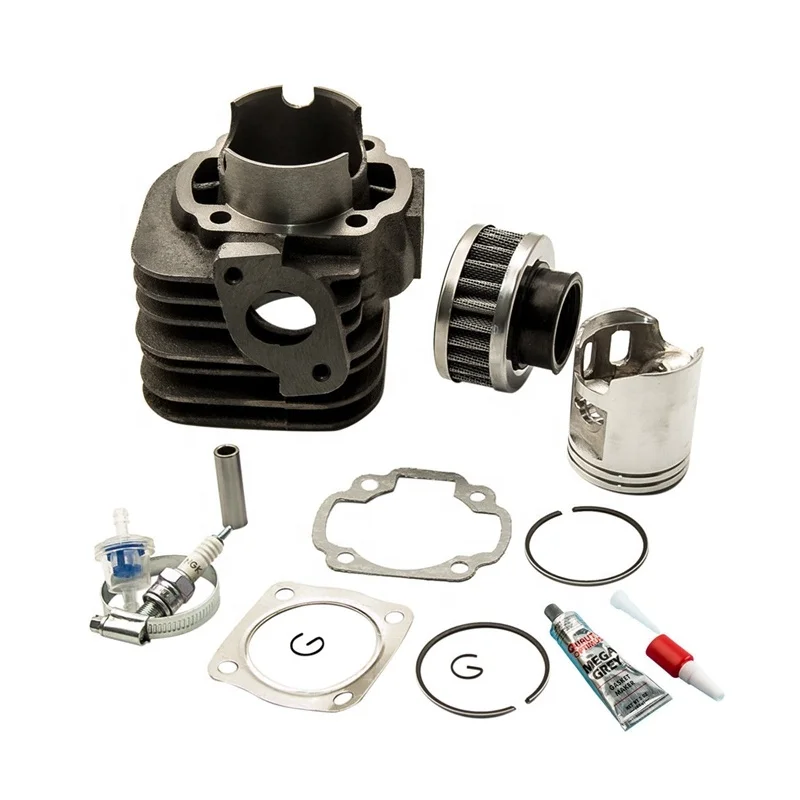
There are also worse situations when a so-called "stepped" defect appears in the upper part of the cylinder. The resulting step reduces the wear time of the cylinder, piston rings, seats on the piston under the rings, as a result of which very noticeable shocks appear during driving. However, this defect becomes noticeable without any measurements. When it changes the nature of the engine - it begins to vibrate strongly.
This is a direct indication for immediate repair, since the ellipsoidality accompanying this defect leads to the fact that the piston rings adhere worse to the cylinder walls. This, in turn, can lead to a breakthrough of gases from the cylinder into the crankcase, a violation of compression in the engine, which also increases oil and fuel consumption.
As you can see, in addition to the fact that untimely elimination of defects leads to a waste of money, they can also cause irreparable damage to the heart of the vehicle.
In this case, cylinder bore will help restore the necessary parameters of this part of the motor. However, boring means not only the restoration of the geometric parameters of the motorcycle cylinders, but the restoration of the normal position of the mating parts relative to each other. In other words, if only the cylinder geometry is corrected, this will not be enough to restore normal alignment and the normal arrangement of all major surfaces.
However, boring means not only the restoration of the geometric parameters of the motorcycle cylinders, but the restoration of the normal position of the mating parts relative to each other. In other words, if only the cylinder geometry is corrected, this will not be enough to restore normal alignment and the normal arrangement of all major surfaces.
The consequence of this is the appearance of excessive friction, which affects other structural components of the piston group. In other words, all moving parts that are involved in the operation of the engine and are included in the piston group will be subjected to an additional load on bending, compression, etc. This, in turn, may cause further cylinder breakage during engine operation.
Thus, if there was a question about boring the cylinder, then, of course, it is better to do it in the workshop - more expensive, but less problematic.
However, at present there are still craftsmen who are willing to carry out this process themselves. Perhaps someone does not have enough money, and someone just likes to spend time in the garage, poking around in his motorcycle. In any case, it is possible to bore a motorcycle cylinder on your own. It should be noted right away that the boring method is also suitable for an automotive cylinder block. The only caveat is that turning to a turner is inevitable, since it is the turner who can make the appropriate mandrel that is suitable for this process.
Perhaps someone does not have enough money, and someone just likes to spend time in the garage, poking around in his motorcycle. In any case, it is possible to bore a motorcycle cylinder on your own. It should be noted right away that the boring method is also suitable for an automotive cylinder block. The only caveat is that turning to a turner is inevitable, since it is the turner who can make the appropriate mandrel that is suitable for this process.
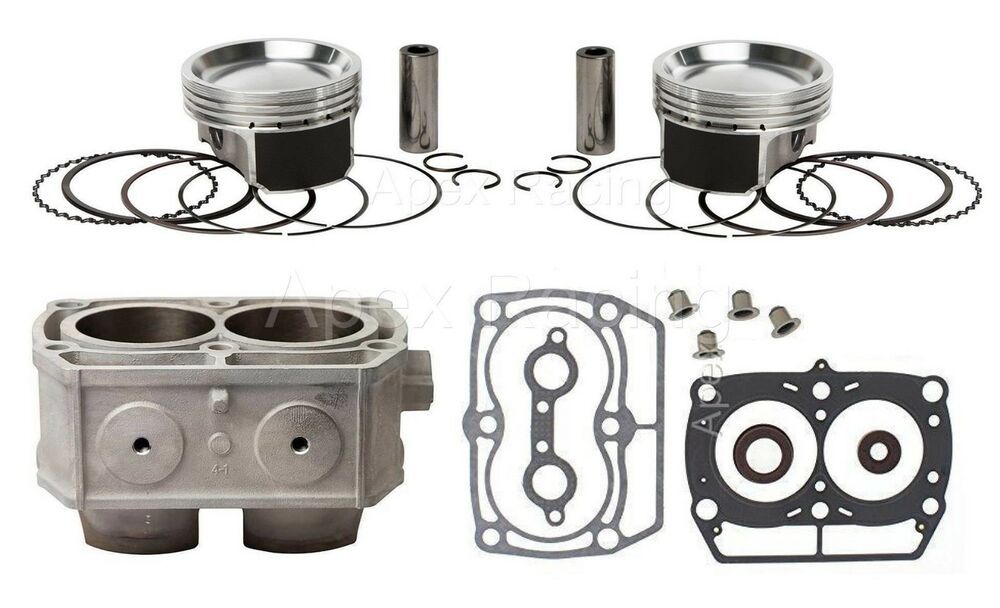 Or do people just hand over the cylinder for grinding without even asking what they will do? how will they do it? on what equipment, etc.
Or do people just hand over the cylinder for grinding without even asking what they will do? how will they do it? on what equipment, etc. Often in practice, when replacing a piston or when changing piston rings, they work with so-called honing brushes or with spring honing stones. However, this action has little in common with competent growth and honing. In this case, the more or less worn working surface of the scooter cylinder is only cleaned and slightly roughened. This cannot improve the geometric characteristics of the cylinder. Due to the fact that the grinding tools are loaded with spring force, they accurately follow every deviation from roundness and every misalignment, but still, without improving the geometry of cylinder . Due to the lower contact pressure, it is hardly possible to achieve a sufficient height of the surface irregularities, which could contribute to improved lubrication. As a result, there is a greater frictional resistance for new piston rings, which run in slightly faster against the cylinder wall. Thus, this cylinder surface wear cannot be prevented or reduced. If the piston rings are worn, then, based on experience, the cylinder wall is also worn to the same extent. The remarkable appearance of the inner bore after a simple honing of the cylinder should not be misleading, as the ellipse of the cylinder has remained the same.
Thus, this cylinder surface wear cannot be prevented or reduced. If the piston rings are worn, then, based on experience, the cylinder wall is also worn to the same extent. The remarkable appearance of the inner bore after a simple honing of the cylinder should not be misleading, as the ellipse of the cylinder has remained the same.
In order to competently restore the working surface of the cylinder on your scooter, the cylinder must first be bored with an ordinary turning tool, after setting the cylinder along the axes with minimal runout, this will get rid of ellipse and other undesirable results of our ride, but only after the cylindrical surface will be restored, only then it is possible to start honing the working surface of the cylinder. Only in this order of carrying out measures to repair the cylinder can you count on the long service life of the repair CPG, otherwise you will only do what to change the rings and throw money away for repairs.
And the last tip for today: If you removed the cylinder and see an absolutely mirror surface there, then you should know that there is nothing to rejoice here, this is wear and tear, since there is no grid on the working surface that forms an oil film (which is especially important for 2t engines) on the walls of the cylinder.
Less lubrication —> more friction —> more temperature —> more wear —> less resource!
And for a snack, a short video on how to honing a cylinder after boring
Cylinder boring process is relatively easy. However, it will take a very long time of monotonous work.
In addition to the mandrel, you will also need a good, moisture-resistant, coarse sandpaper, as well as a couple of sheets of fine-grain sandpaper to stuff the mirror. When all the tools are available, you can proceed directly to the process of boring the cylinder. To do this, insert coarse sandpaper into the groove, and then wrap the mandrel around it. Sandpaper should also be well saturated with oil and can be inserted into the cylinder.
Care must be taken to ensure that the mandrel with sandpaper enters the cylinder correctly, otherwise there is a risk of boring it out of the repair size. To do this, you need to check. After the mandrel is wrapped with sandpaper, it should be placed in the cylinder, if it enters too freely, then paper should be placed under the sandpaper and try again. It is necessary to ensure that the mandrel with sandpaper enters the cylinder a little tight, with the help of rotation. When everything is done, you can start rotating the boring tool inside the cylinder.
It is necessary to ensure that the mandrel with sandpaper enters the cylinder a little tight, with the help of rotation. When everything is done, you can start rotating the boring tool inside the cylinder.
In this case, the sanding paper should be lubricated with oil every time - this will prevent its frequent clogging. As soon as there is a feeling that the sandpaper inside the cylinder rotates easily, you need to put paper under it again and continue the process. In the course of boring the cylinder, you should periodically try to insert a repair piston into it. When the piston enters the cylinder tightly, you can change the sandpaper to a finer one, and start filling the mirror.
Care should be taken to ensure that the piston does not dangle during the boring of the motorcycle cylinder, but its movement is not hindered either.
After all, motorcycles are air-cooled and the cylinder heats up very much, so its dense boring can lead to the fact that the piston will wedge when heated, and running the motorcycle will bring only torment.
Before you start boring a motorcycle cylinder yourself, you should remember that this work is best done by a specialist on a special boring machine.
In this case, the cylinder will be bored perfectly. But manually, ideal boring may not be achieved, as a result of which precious time will simply be lost on empty work, which will still have to be redone. Therefore, it is best to give the cylinder to the workshop for boring.
So, closer to the topic. It is possible to bore a cylinder block at home without special equipment by several folk methods. They will require not only time, which goes without saying, but also patience.
On the other hand, most experts agree that it is still necessary to use the machine. The boring machine will allow you to fit the cylinder perfectly accurately, although much will depend on the skills of the person. But in comparison with the manual boring method, the proportion of marriage is minimized.
Although the method is "old-fashioned", it also cannot do without a tool.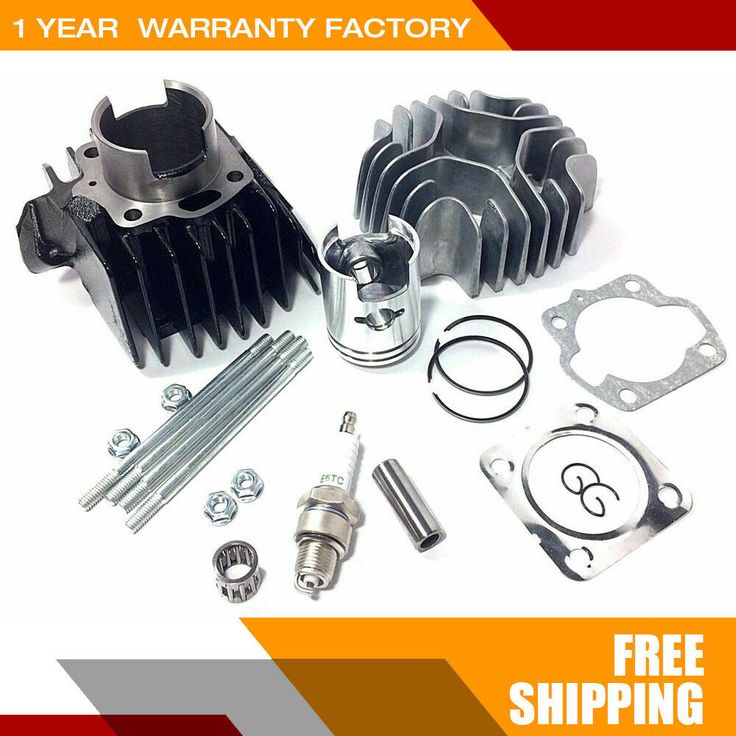 A good electric drill, set at low speeds, is suitable here. A worn piston is also required, having a gap in the sleeve (side). And you will also need a cylinder pin, as well as a skin with a different number of abrasive.
A good electric drill, set at low speeds, is suitable here. A worn piston is also required, having a gap in the sleeve (side). And you will also need a cylinder pin, as well as a skin with a different number of abrasive.
The piston in this case plays the role of the most significant element. It is the working body on which the sandpaper is fixed. It is better to select an old and exhausted piston, since after boring it will already be unusable.
Car service does not use paper, but abrasive chips. Instead of a drill, as mentioned above, a special machine with a crank having the required diameter is used.
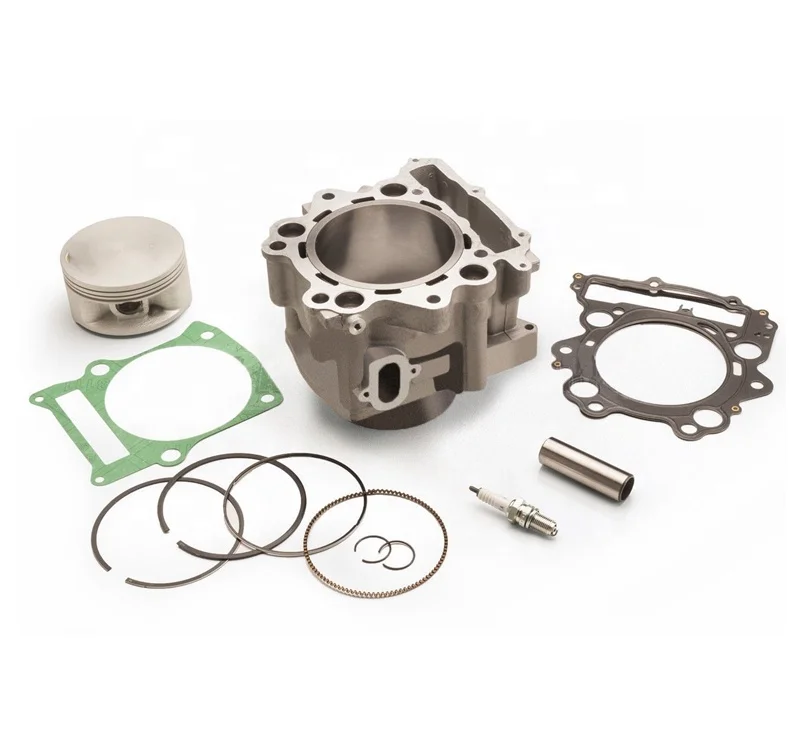
In the process of such boring, it is necessary to ensure that the skin does not come out of the piston. At first, a large skin is applied, then a smaller one. At the final stage, grinding should be carried out by zeroing.
Some experts also advise to bore the cylinder block while using oil. Others do not agree with this opinion, as they believe that it is well bored even when dry. The latter option appeals to us more, especially since uniformity and smoothness can be felt with your hands, if you have a certain skill.
A useful recommendation is: in order not to beat off your hands during grinding with an electric drill, it is recommended to fix the cylinder well, but try not to damage it in the process.
You will also find the honing video helpful.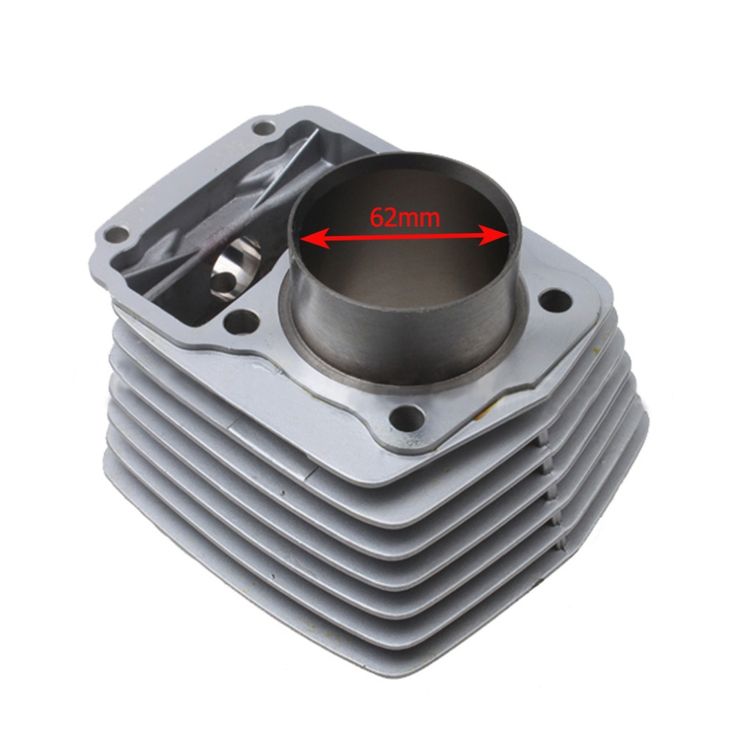
A wooden mandrel will be used as the main tool in this case. But you will have to turn to a milling machine operator who will grind this very mandrel. Mandrel manufacturing technology is based on the following formula: if the cylinder being bored is 76, the bar mandrel should be 74 mm in diameter. As for the length, it should be 200 mm larger than the cylinder size.
The approximate depth of the groove should be 10 mm. The skin, as in the first case, should be both large and small.
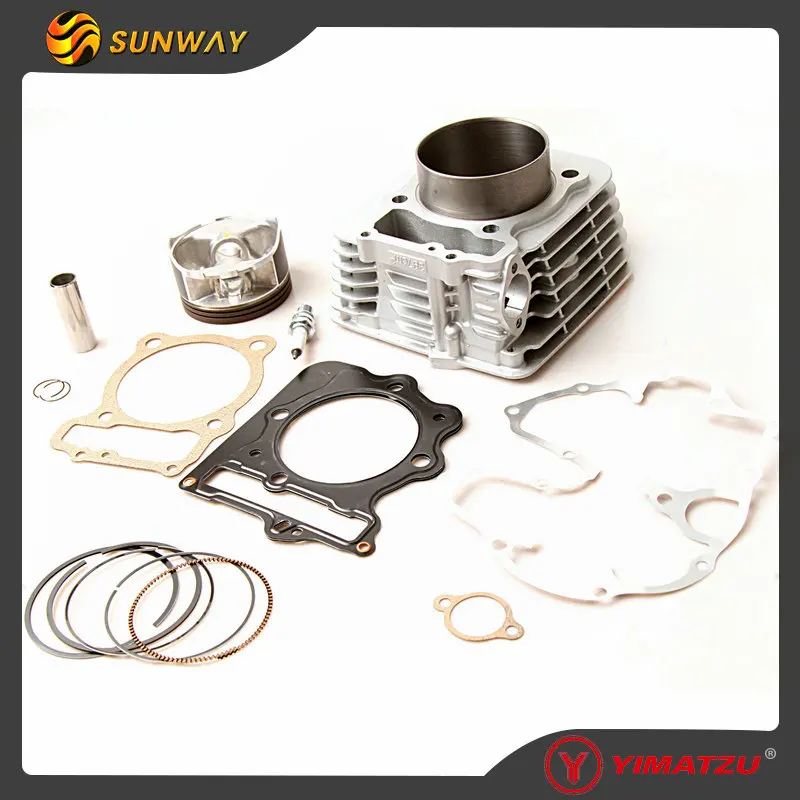 Then change the paper to small and continue.
Then change the paper to small and continue. The best grinders in the world are the Japanese. Their secret is in their great patience. The same is true here. You have to be patient, otherwise nothing really will come of it. It is not worth rushing in the process of boring cylinders.
The ideal option for boring cylinders that contains a car engine block:
Ideal cylinder bore that contains a motorcycle engine block:
Once you learn how to do your own boring work properly, you will no longer be bothered by the problem most used car owners have. It is hardly possible to avoid low compression of internal combustion engines on used cars, but theoretically everyone can bore and increase compression.